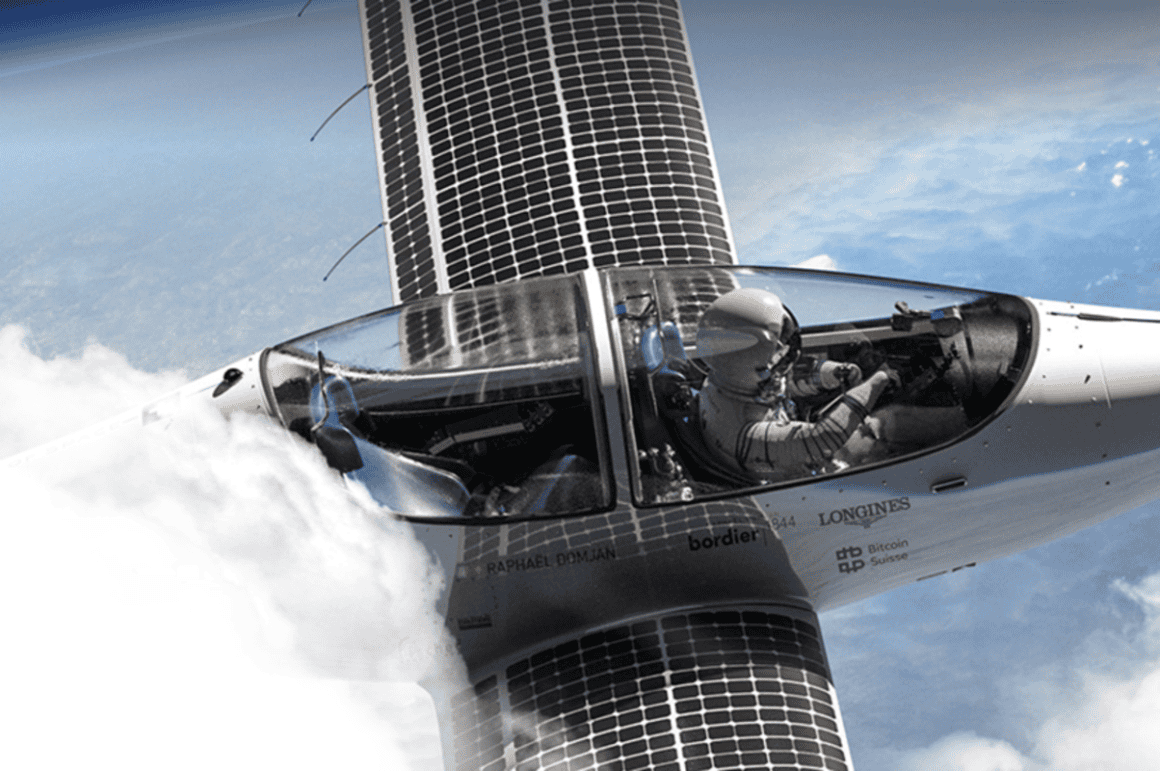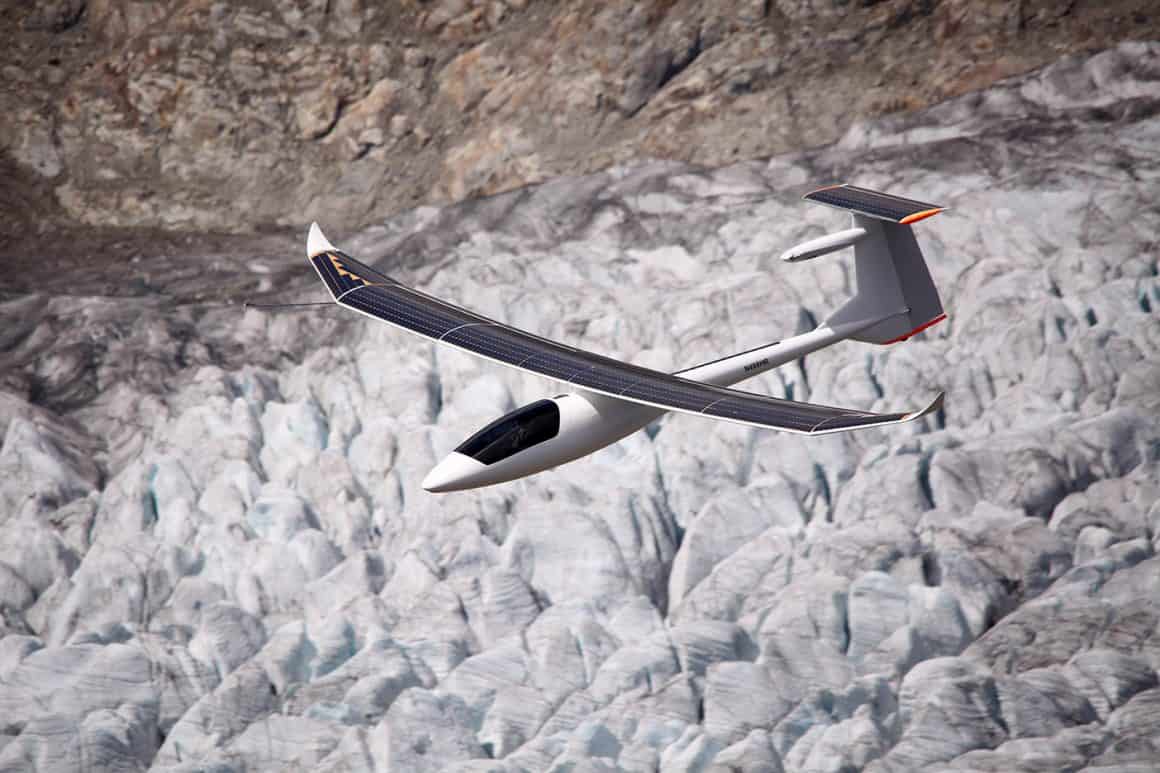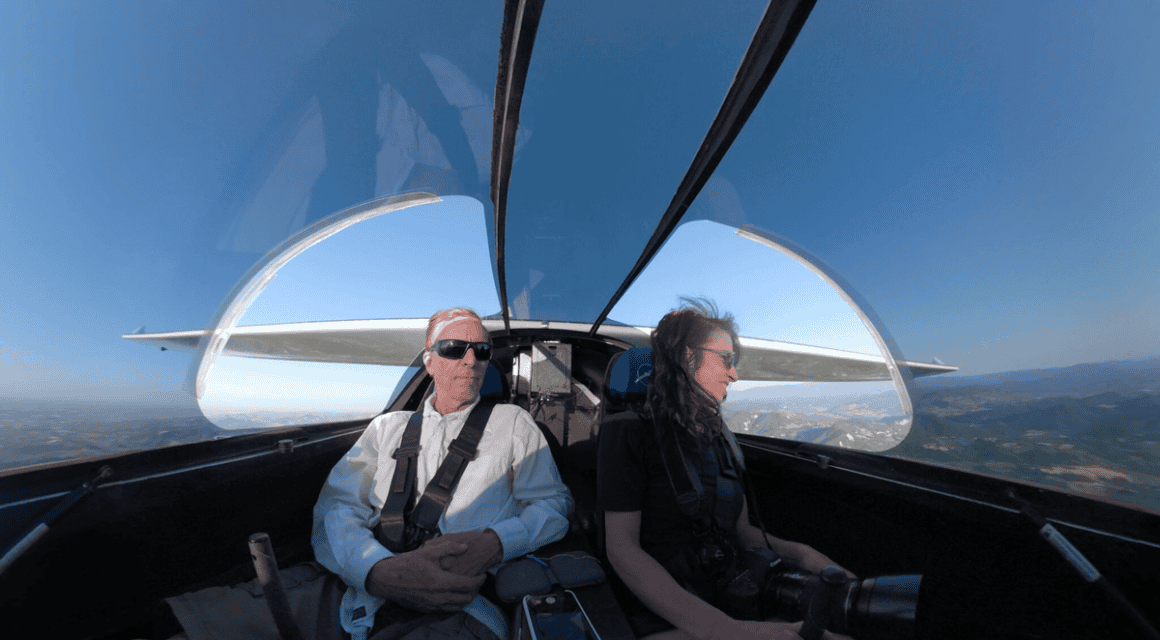On 12 August 2025, the HB-SXA aircraft flew to an altitude of 31,288 feet, setting a world record for the highest flight ever by a solar-powered plane. The aircraft, built by Swiss company SolarStratos, will have two future missions: to demonstrate the capability of solar power for aircraft and to study and operate in the upper atmosphere. Another company, Solar Flight, based in California, is also working on several designs for solar-powered planes.
“Up there, facing the sun that powers our wings, flying without burning a single drop of fuel is an indescribable feeling…a moment out of time,” said the HB-SXA pilot Raphaël Domjan of Switzerland.
HB-SXA Solar-Powered Plane Climbs to a Record 31,288 Feet
On 12 August, the HB-SXA solar-powered plane took off from Sion Airport in Switzerland. During the 5-hour flight, Raphaël Domjan took it up to 31,288 feet over Switzerland’s Valais Alps. The aircraft relied on solar energy and thermal updrafts to ascend. A 50-kilowatt electric motor running at 2,200 RPMs powers the plane, and it produces no pollution. Its forward-mounted propeller has three blades and a 6.23-foot diameter.

It also has an 81.36-foot wingspan. The HB-SXA has a 236.8-square-foot field of solar cells covering the wings. These cells provide energy to lithium-ion batteries. The plane’s fuselage and wings are made from carbon fiber, which gives them a combination of light weight and strength.
Challenges and Advantages of Solar-Powered Planes
The development of solar-powered planes presents some unique challenges for designers. NASA and various subcontractors have been working on solar-powered aircraft since the 1980s. These include the Pathfinder, Centurion, and Helios. Some of them have wingspans as wide as 737 jets.
Tony Tao, a PhD student at MIT, said an important challenge is that the sun and airborne planes are both moving, which constantly changes the angle at which the sun strikes the solar panels. The result is that they do not capture as much energy as a solar panel on a stationary object like a roof.

Tao added that the relationship between a solar-powered plane’s speed and the power it needs to move the plane forward means that the panels only capture about ten to twenty percent of the energy from the sun. More simply, this results in a maximum speed of only about 50 miles per hour.
Another design difficulty in solar-powered planes is that they generally have long, thin wings and delicate solar panels. This makes them vulnerable during bad weather.
An advantage of solar-powered planes is that they do not need to carry fuel or rely on engines that combust oxygen. This allows them to fly at higher altitudes than most types of aircraft. Tao added that these planes are probably better suited for missions like loitering over areas for data collection and surveillance instead of carrying cargo or large numbers of passengers.
Sunseeker Duo Has Tandem Seats in Cockpit
The Solar Flight company in California is working on two unique designs of solar-powered planes. One, the Sunseeker Duo, is one of the only solar aircraft with two seats. The seats are next to each other in the cockpit. Its wingspan is 72 feet, and it has an empty weight of 617 pounds.

It also has 1510 solar cells on its wings and tail surfaces. The cells power a battery pack in the fuselage that provides electricity to a 15-kilowatt motor mounted on the front of the vertical stabilizer. Other features of the Sunseeker Duo are a retractable landing gear and folding wings that allow it to take up no more hangar space than a conventional light airplane. It is also possible to take the plane apart and pack it into a trailer.

Company Developing Six-Passenger Solar-Powered Plane
Solar Flight is also working on a six-passenger solar-powered plane. Still in the design stage, the plane’s wing will have a high camber to give it short take-off and landing capability. The primary source of power will be solar cells charging a lithium battery pack, but the company plans to offer an optional range extender. This will be a generator running on unleaded auto gas.
